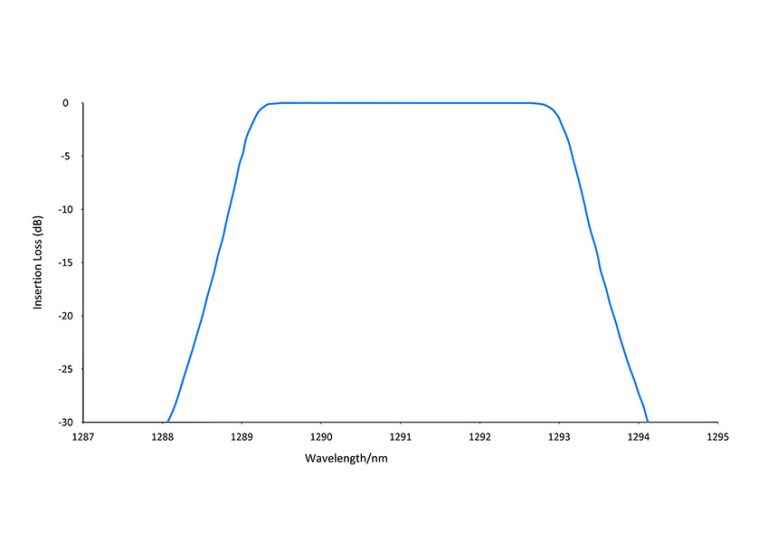LWDM Filter
FAQs
An LWDM (LAN Wavelength Division Multiplexing) filter is an optical device specifically designed for short-distance, high-density optical communication, mainly used in data centers and 5G fronthaul scenarios. LWDM technology multiplexes multiple wavelength signals in a single optical fiber through finer wavelength spacing (typically 4–5 nm), increasing transmission capacity.
The LWDM wavelength range mainly falls within the O-band (1260–1360 nm).
-
Traditional LAN-WDM: 4 channels at 1295.56 nm, 1300.05 nm, 1304.58 nm, and 1309.14 nm (spacing approx. 4.5 nm).
-
Extended LWDM: Supports 12–24 channels, covering 1269–1332 nm with spacing of approx. 4.5–5 nm.
LWDM thin-film filters work based on multilayer dielectric reflection. Alternating layers of high refractive index materials (e.g., Ta₂O₅) and low refractive index materials (e.g., SiO₂) are deposited. By optimizing the number of layers and their thickness, a narrow passband (e.g., ±2.5 nm) and high isolation (>30 dB) are achieved.
When selecting an LWDM optical filter, precise alignment with LWDM channel plans (e.g., ±0.2 nm) is required to avoid crosstalk. A typical 3 dB bandwidth is around 4–5 nm to cover the target wavelength while suppressing adjacent channels. In-band loss should be <0.5 dB to ensure signal efficiency, adjacent channel isolation >30 dB, and far-end isolation >50 dB.
LWDM filters are mainly used in data center interconnects (DCI) and 5G fronthaul. They are also applied in enterprise networks and metro networks to multiplex different service wavelengths for voice, data, and video transmission.


